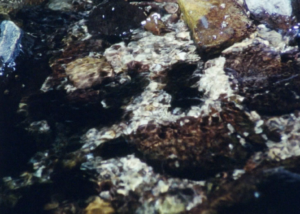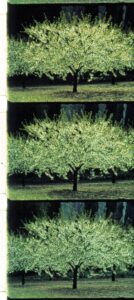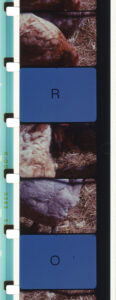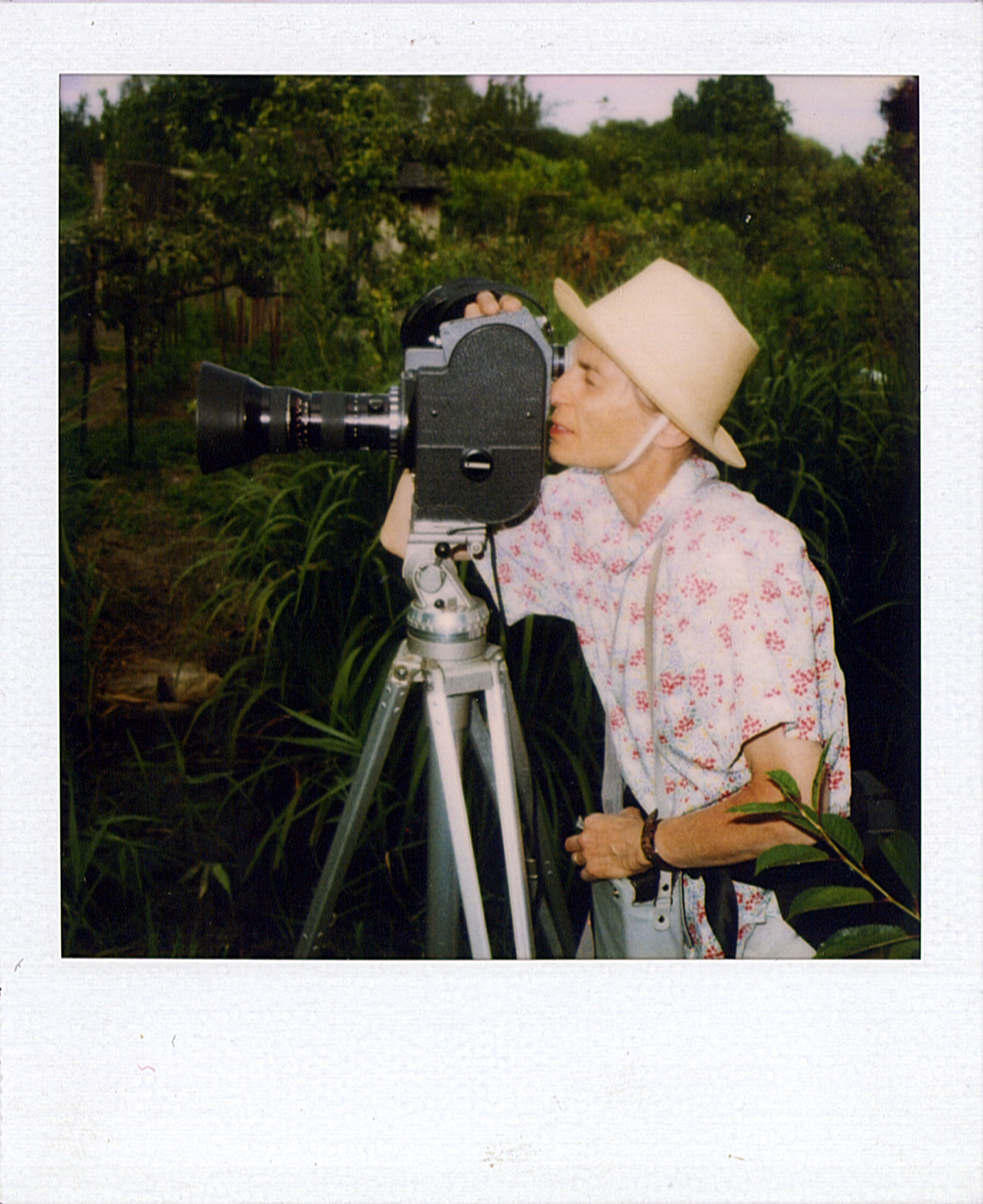Prix AWARE

Still from Voiliers et coquelicot by Rose Lowder (2001) © all rights reserved by the artist / authorised by Light Cone
Though known for her work in experimental cinema, Rose Lowder is also a visual artist. A pioneer of the global and ecological approach to artmaking and with a singular use of technique, she has directed some fifty films. She lives in Avignon, where she co-founded, and continues to curate programmes for, the Archives du Film Experimental. Between 1996 and 2005 she was associate professor at the École des Arts de la Sorbonne at Université Paris 1 Panthéon-Sorbonne, teaching history, theory and aesthetics of experimental cinema.

Still from Jardin du sel by Rose Lowder (2011) © all rights reserved by the artist / authorised by Light Cone

Still from Les tournesols by Rose Lowder (1982-1983) © all rights reserved by the artist / authorised by Light Cone
R. Lowder was born in Lima, to a family that encouraged her to pursue an artistic education. In 1960 she left for London, where she enrolled at Regent Street Polytechnic (1960-1962) and later at the Chelsea School of Art (1962-1964), taking classes in sculpture, painting, design and drawing. On graduating, she found work as an assistant editor at the BBC. One day, during a screening, she encountered the animated images of Robert Breer (1926-2011), and discovered, that one could make films as an artist”. In 1972 she joined her partner in Avignon, and, alongside her day jobs, began to make her own films.

Still from La Source de la Loire by Rose Lowder (2019-2021) © all rights reserved by the artist / authorised by Light Cone
The films of R. Lowder are constructed frame by frame. In Les Tournesols (The Sunflowers, 1982), the artist films a field of sunflowers with no other background. The film seems to be one still shot, but the flowers are moving; they crowd the screen, filling it. With her 16mm Bolex camera moving back and forth, R. Lowder records onto the film non-chronologically, giving a particular effect: that the vibrating movement of the field does not come from the filming but from the flowers themselves, “worked” like a motif. For the filmmaker, repetition and study are integral to her process, and we see a continuation of this research in her Scènes de la vie française (Scenes from French Life, 1986), and later in Impromptu (1989).

Rose Lowder, Quiproquo, 1992, color, silent, simple screen, 13′ 00 min., © All rights reserved by the artist, Courtesy of Light Cone
R. Lowder’s best-known series, Bouquets, proved the catalyst for an ongoing study of compression, composition, colour and movement. Starting in 1994, the series of one-minute films was initially conceived in order to avoid wasting the ends of reels, and now numbers four sets of series of ten: 1 to 10 (1994-1995), 11 to 20 (2001-2005), 21 to 30 (2005-2009) and 31 to 40 (2014-2022). In them, R. Lowder redefines what she considers filming, a process involving the weaving of images into the camera. In the transitions from image to image, the camera settings shift, creating still lifes that seem to carry their own internal motion. Notably, an environmentally conscious thread runs through Bouquets: for R. Lowder images of ecologies must go hand in hand with an ecologically responsible artistic practice, which, for her, ranges from respecting the landscapes she films, her choice of locations such as eco-friendly farms, to the way her works are distributed, in order to sustain and preserve the craft of cinema. This can be seen also in the luminous and contemplative Source de la Loire (2019-2021).

Rose Lowder, Bouquet 31-40, 2014-2022, 16mm film, color, silent, simple screen, 10′ 34 min., © All rights reserved by the artist, Courtesy of Light Cone
Another line of enquiry evident in her practice relates to how the artist takes care of and pays attention to the technical objects she uses. R. Lowder’s vision allows for a dialogue between technique and landscape, as if there might be no ecological image without an ecological examination of the technique used to create it. Her loyalty to the 16mm Bolex is testament to this, but we see evidence of it in her very first film, Loops (1976). An experiment conducted without a camera, only a projector, a 16mm film leader, a perforator and a blue felt-tip pen, it proves to be the beginning of an exploration of the medium itself, its own technicality, wherein she allows herself to be guided by its mechanisms: the possibilities offered by the reel to arrange images experimentally are also shown to be inherent to the tool of projection itself, as if the film were already inscribed in it.
Finally, running alongside and supporting the ecological images of R. Lowder, is a rigourous system of notation: as she is filming, she is drawing her images, sharpening her mathematical focus on the landscape. Ostensibly technical, the notes themselves have their own material qualities: becoming scores to her works, they read like a poetic code.
Salma Mochtari
(WARNING: This video may potentially trigger seizures for people with photosensitive epilepsy.)
Translated from French by Flora Hibberd.
Tous droits réservés dans tous pays/All rights reserved for all countries.





